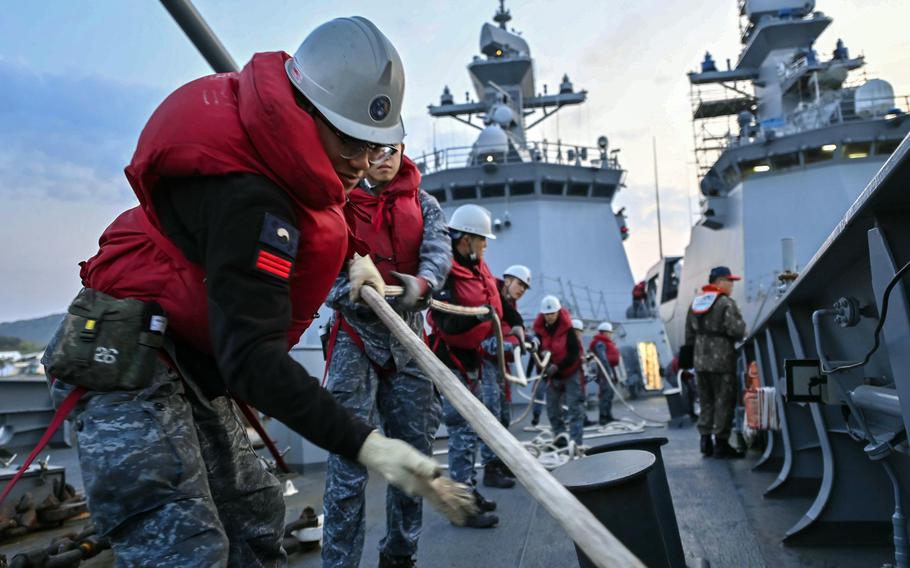
Crew members aboard a South Korean frigate prepare to depart for a naval exercise on April 28, 2025. (South Korean navy)
The South Korean navy concluded a four-day maritime exercise designed to bolster combat readiness and “uplift the will to fight for victory,” as North Korea tested weapons on its newly launched destroyer.
The drills, held April 28 through Thursday, took place in the East Sea — also known as the Sea of Japan — and in the East China Sea. Approximately 20 warships and 10 aircraft were involved, according to a South Korean navy news release Friday.
The exercise featured realistic training in anti-ship, anti-submarine and anti-aircraft warfare, as well as responses to drone threats and maritime interdiction operations, the navy said.
Three frigates, a minelayer, a logistics support vessel, patrol boats and speed boats took part, along with a P-3 maritime patrol aircraft and Lynx helicopters, according to the release.
The drills were led by the South Korean navy’s 2nd and 3rd fleets, which focused on building operational readiness in their respective theaters and preparing for various naval threats, the service said.
South Korea’s coast guard and maritime special operations forces also participated in what the navy described as a comprehensive readiness demonstration.
“Through this exercise, all crew members could acquire combat readiness to quickly and accurately respond to threats in real combat,” Cmdr. Im Hyun-sik of the frigate ROKS Gyeongnam said in the release.
Meanwhile, North Korea test-fired a range of weapons aboard its new destroyer, the Choe Hyon, on April 28 and 29 following the ship’s launch at Nampho Shipyard, according to the state-run Korean Central News Agency.
The vessel reportedly fired a supersonic cruise missile, a strategic cruise missile, an anti-aircraft missile, and a 127 mm automatic naval gun.
Despite the high-profile display, the North Korean destroyer likely requires a considerable amount of time before its ready to deploy, according to a report Friday by the Yonhap News Agency.
“When looking at its weapons and equipment, there is a possibility that [the North] received technological or financial help from Russia,” Col. Lee Sung-jun, spokesman for the Joint Chiefs of Staff, said in the report.